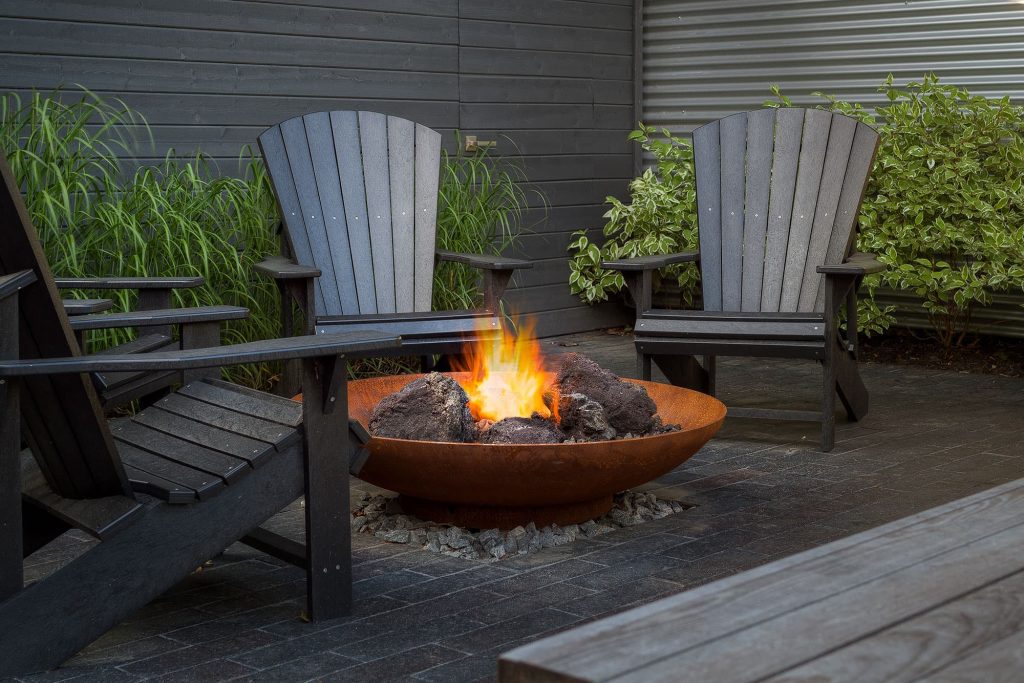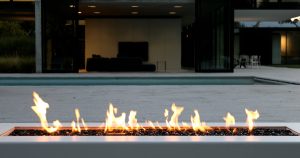When considering a natural gas or propane outdoor fire pit, one of the key questions that you will need to answer is “how do you want to light it?”
There are a variety of ignition systems available for outdoor fire pits ranging from fully manual (turn on the gas, throw in a match and run) to electronically controlled units that can be connected to remote controls or home control systems. In choosing a system, you need to consider the available services to the fire pit location and the level of convenience that you desire.
On the simplest end of the spectrum is the “fully manual” burner (these are sometimes referred to as “match-lit”, but I prefer “fully manual” as there are other types of fire pits that may also be lit with a match). This consists of a manual gas valve that is controlled by either turning a handle or, in most cases, a control key. The valve is similar to the manual shut-off that you would find connected to your gas range or hot water tank – it simply starts and stops the flow of gas. It may also give you some control over the gas volume or flame height. The advantage of this type of system is simplicity: you require only a gas (or propane) hook-up and there is very little that can go wrong with these systems.
There are a few disadvantages:
Safety: these appliances will not shut off if there is no flame present. This means that if the fire goes out for any reason, the gas will continue to flow.
Ease: in order to light a fully manual burner, you must hold a flame up directly to the main burner. This means that the long delay in the ignition, the larger the resulting fireball – some people are not comfortable with this.
Limited flame size: for a burner to meet the CSA/ANSI standard, fully manual outdoor burners are limited to a maximum of 65,000 BTU/h
One step up from “fully manual” is a “manually lit pilot with safety thermocouple”. This type of outdoor fire pit utilizes a pilot to ignite the main burner – the operator, then, only has to light the pilot flame, not the main burner. Within this category, there are several ways that pilots can be lit. Again, on the simpler end are “match-lit” pilots which are lit by holding a flame near the pilot. Others utilize sparklers, which can be battery-operated or piezo-electric (like the push-button start on a typical barbecue). In all cases, the flow of gas to the main burner is controlled manually, by turning a valve, only after the pilot flame is established (or “proven”).
The main advantage of having a pilot is safety – gas cannot flow if there is no flame present. Having this type of safety control also allows for higher BTU outputs in certified fire pits. And lighting a pilot generally carries less risk than directly lighting the main burner. The disadvantages to some of these types of fire pit burners are that sparklers can be a little finicky: piezoelectric sparks can be unreliable and battery-operated units require access and ensuring batteries are fresh. Paloform uses a match-lit pilot in our manual fire pit burners, which we feel is the best combination of safety and reliability.
















